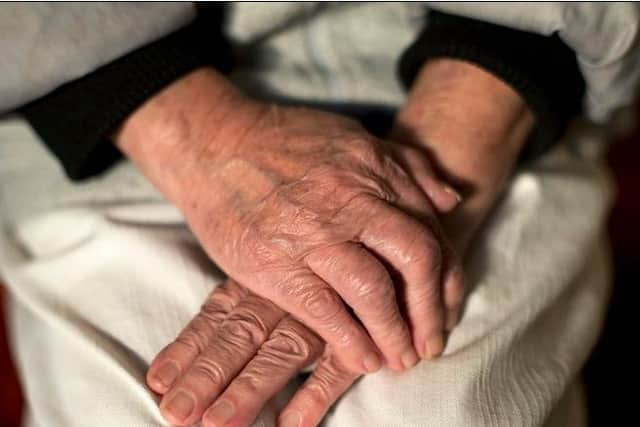Councillors’ plea to consider easing visiting restrictions in Hertfordshire care homes
and live on Freeview channel 276
Councillors have highlighted the impact that closing care homes to visitors can have on residents and their families.
Throughout the pandemic visiting has been restricted, in a bid to protect residents from the spread of Covid-19.
Advertisement
Hide AdAdvertisement
Hide AdBut on Friday, October 9, a number of county councillors asked if measures could be taken to allow more visits.


At the meeting of the overview and scrutiny committee, Liberal Democrat Cllr Sandy Walkington said residents were “increasingly anxious” when they were not able to visit relatives with dementia in care homes.
He stressed the particular importance of familiar contact for dementia patients.
And while he said he appreciated the need to stop Covid from re-establishing itself in care homes, he asked if there was a way to ‘square the circle’.
Advertisement
Hide AdAdvertisement
Hide AdConservative Cllr Ken Crofton highlighted his own brother, who was not being allowed to see his seriously-ill 62-year-old wife.
And he said: “It isn’t the right thing to do to let people die without family contact.”
Meanwhile Labour’s Cllr Margaret Eames-Petersen asked if there was a way visitors could be classed as ‘key workers’, making them eligible for routine testing and PPE to make more visits possible.
Tom Hennessey, assistant director for health integration, told committee members that limits on visitors were imposed to restrict the virus from entering care homes
Advertisement
Hide AdAdvertisement
Hide AdHe acknowledged that some people – in the last stages of their lives or suffering from dementia – may not be able to understand why they can’t see their loved ones.
And he accepted that they may also be frightened by the sight of their carers wearing face masks.
He said there was “delicate balance” between seeing relatives and the safety of other residents – and he said advice was offered to care homes on a case by case basis.
This advice, he said, could depend on the facilities available at the care home – such as gardens – and the length of time since an outbreak at the home.
Advertisement
Hide AdAdvertisement
Hide AdBut ultimately, he said, it was up to the care home to determine whether or not to follow the advice of the county council.
He also highlighted the use of iPads to help relatives to stay in touch, although he accepted was never going to replace physical contact.
On the specific suggestion of treating individual visitors as ‘key workers’ interim director of adult social care Chris Badger said it would be difficult to take that decision locally.
And he pointed to the relatively narrow funnel of ‘lab capacity’ that was available – as well as the availability of PPE and training on how to put it on and take it off.
Advertisement
Hide AdAdvertisement
Hide AdCurrently, care homes must close to visitors if a resident has symptoms of Covid-19 – and can only re-open if a test for that resident is negative or if there are no new cases for 28 days.
And homes may also be asked to close where local intelligence suggests the prevalence of the virus has increased in the community or where there are local restrictions.
However advice from the county council stresses that otherwise family visits should be possible for a limited time, where they can be done in a safe way.
And it highlights a number of measures such as maintaining a two metre social distance, wearing face masks, hand-washing and the use of sanitizer
Advertisement
Hide AdAdvertisement
Hide AdWhere possible it says visits should take place in gardens or an outside space , with care homes also being asked to consider window visits or drive-through visits – and it suggests the use of bookable slots.
During the committee meeting Mr Badger said the county council was supporting care homes to the tune of up to £2m a month – to meet the additional costs of staffing, PPE and other costs associated with the pandemic.
And he acknowledged the “profound” impact the pandemic had had on the care home sector.
Mr Hennessey said the care home sector had been right at the front line of the pandemic – and praised the work of staff to support the physical and emotional health of residents.